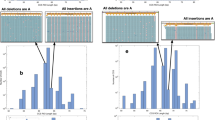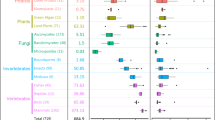Abstract.
Repetitive DNA is ubiquitous in microbial genomes. Different classes of short sequence repeats (SSRs) have been identified and demonstrated to be generally heterogeneous in a locus-dependent manner, reflected in variation in the number of repeat units present at a given genomic site or by sequence heterogeneity among individual units. Both types of variability can be used to assess intra-species genetic diversity. Repeat variability often affects the coding potential of the region in which the repetitive element is located. This implies that determination of the primary structure of variable numbers of tandem repeats can be used for epidemiological identification purposes, and also for the analysis of gene function. Precise assessment of SSR structure can also generate insight into the regulation of gene expression. Together, DNA repeat analysis in microbial species provides information on both functional and evolutionary aspects of genetic diversity among microbial isolates.
Similar content being viewed by others
Author information
Authors and Affiliations
Rights and permissions
About this article
Cite this article
van Belkum, A. Short sequence repeats in microbial pathogenesis and evolution. CMLS, Cell. Mol. Life Sci. 56, 729–734 (1999). https://doi.org/10.1007/s000180050019
Issue Date:
DOI: https://doi.org/10.1007/s000180050019




